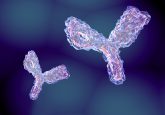Ethyl glucuronide is found to be promising long-term alcohol biomarker
Scientists have tested the use of ethyl glucuronide as a direct alcohol biomarker in hair and fingernail specimens.
A recent report by researchers at the University of Wisconsin-Milwaukee (WI, USA) in collaboration with United States Drug Testing Laboratory, Inc. (WI, USA) demonstrates the promising performance of biomarker ethyl glucuronide (EtG) as a quantitative indicator of alcohol use in hair and fingernail samples.
Ethanol is metabolically converted to EtG in the liver, which can then be captured within the keratin fibers of growing fingernails and hair. The detection of EtG in hair as a measure of chronic excessive alcohol consumption (as supported by the Society of Hair Testing [Strasbourg, France]) has become more prevalent in the drug and alcohol testing industry in the last decade. With funding from the National Institute on Alcohol Abuse and Alcoholism (MD, USA), the team, led by Lisa Berger, a researcher at the University of Wisconsin-Milwaukee, investigated the effectiveness of EtG analysis in hair in comparison to fingernail samples.
According to the study, specimens were taken from 606 students, between the ages of 18 and 25 years old and EtG concentrations in each sample set were measured by LC-MS/MS at three thresholds (30 pg/mg, 20pg/mg and 8 pg/mg). Weekly alcohol use, increasing-risk drinking and high-risk drinking on average during the past 12 weeks were assessed by participant interview using the timeline follow-back method and the results were used to ascertain how effectively EtG analysis in fingernails and hair could identify alcohol consumption by the subjects in each category.
According to the results of the study, in hair and fingernails at all three EtG thresholds, sensitivity was discovered to be greatest for the high-risk drinking group. The team concluded that EtG analysis in fingernails may hold promise as a quantitative analytical tool to distinguish between the different levels of alcohol consumption, however, further research is necessary to develop the potential use of fingernail EtG testing.
Source: Berger L, Fendrich M, Jones J, Fuhrmann D, Plate C, Lewis D. Ethyl glucuronide in hair and fingernails as a long-term alcohol biomarker. Addiction doi: 10.1111/add.12402 (Epub ahead of print) (2014).





